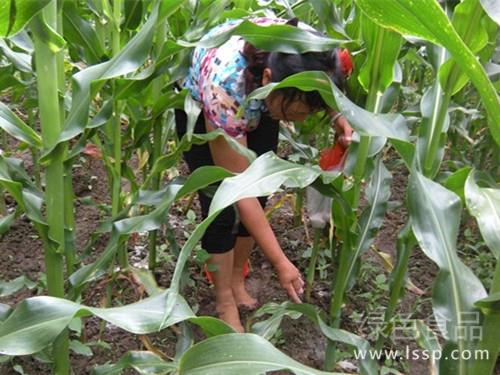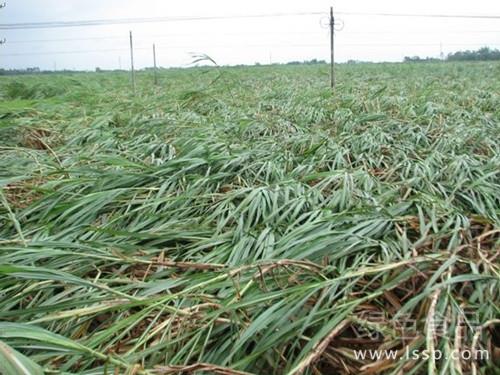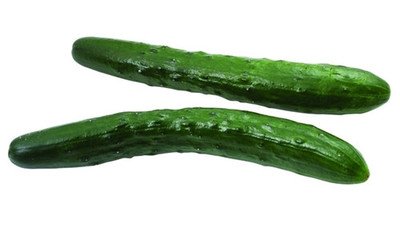Potassium deficiency leads to Water loss in Dayan Maize can be applied with potassium fertilizer for high yield

Fertilization of corn
As the output increases, the potassium requirement increases. With the improvement of maize yield, the supply of soil available potassium is required to increase in the key growth period. The results of many long-term positioning experiments of corn show that when the yield increases by 10% to 20%, the potassium uptake increases accordingly. The stable high yield can be maintained by properly increasing the potassium content of maize tissue. Although the content of soil available potassium in northern spring sowing corn area is at a high level (such as 70mg / kg and 130mg / kg), the application of potassium fertilizer can still increase yield. Especially in some soils with medium content of available potassium and small capacity of slowly available potassium, it is necessary to consider the application of potassium fertilizer in high-yield fields. Therefore, when taking the yield target as the main basis for recommending potassium application, we should pay attention not only to increase the application of potassium fertilizer to the soil with low available potassium content is a necessary measure to ensure high yield, but also to pay attention to some soil available potassium level even when the level is medium. The application of appropriate amount of potassium fertilizer also has a good effect.
With the increase of planting density, the potassium requirement increased. At present, in the high-yield cultivation of hybrid maize, the yield is often greatly increased by increasing density, and at the same time, the potassium uptake of high-density plants to farmland is also significantly increased. Therefore, when the density increases, if there is no corresponding application of potassium fertilizer or improve the effectiveness of soil potassium, it is difficult for crops to absorb potassium, and the yield may decrease or fail to reach the ideal level. However, after the application of 5kg / mu of potash fertilizer, the yield increased rather than decreased. Especially in the corn plots with low available potassium content and irrigation conditions. Therefore, in the recommended fertilization of corn, in order to adapt to the higher density and yield level, the amount of potassium application should be appropriately increased than the conventional amount.
The balance of nitrogen and potassium and the increase of potassium requirement. In the cultivation of dense planting high-yield maize, it is very important to coordinate the balanced supply of potassium fertilizer and nitrogen fertilizer. In general, more nitrogen is applied in order to achieve the goal of high yield, which aggravates the infection rate of plant diseases and insect pests such as stem rot, root rot, bacterial wilt and so on. If the supply of potash fertilizer is not increased accordingly, symptoms of nitrogen and potassium imbalance will be formed. Potassium deficiency first weakened the bending strength and epidermis thickness of maize stems and leaves, which not only increased the possibility of lodging, but also increased the sensitivity of maize to insect pests and diseases. As we all know, among the nutrient elements, nitrogen and potassium have great effects on the disease resistance of maize, but their action directions are different. Too much nitrogen will often increase the sensitivity of maize to disease, while the effect of potassium is the opposite, which can increase the disease resistance of crops.
So, how to diagnose potassium deficiency in the field? Lack of potassium should be how to supplement potassium?
When spring corn enters the jointing stage, the growth period from small trumpet mouth to large trumpet mouth is its rapid growth period, and the demand for nitrogen, phosphorus and potassium has increased. Usually in the actual production, we are used to only applying nitrogen fertilizer but not paying attention to potassium fertilizer, but in the high-yield and close planting cultivation of spring maize, whether topdressing is needed or not, as long as we ask the corn growing in the field and observe the plant growth status, we may get the answer. That is to often go to the corn field at 90 o'clock in the morning, especially in windy weather. If you see the leaves of spring corn wilting in the morning, it will tell you, "I am deficient in potassium." Because for the farmland that is not in urgent need of irrigation, normal and robust corn plants will not wilt leaves in the morning, but it is normal to wilt after noon. Because potassium can affect the stomatal closure of leaves and increase the water retention function of plants. When potassium is deficient, the stomatal resistance is large and can not be closed normally, which leads to serious water loss in maize and wilting phenomenon. At this time, potash fertilizer must be applied to remedy it. The most feasible measure is to topdressing 5kg potassium chloride. After ditch application or hole application, the soil can be restored.
- Prev

Lodging sugarcane is easy to hollow or puxin how to prevent the strong wind blowing down sugarcane
Lodging sugarcane is easy to hollow or puxin how to prevent the strong wind blowing down sugarcane
- Next

Which is better, straight cucumber or curved cucumber? What if the cucumber is not straight?
Which is better, straight cucumber or curved cucumber? What if the cucumber is not straight?
Related
- Fuxing push coffee new agricultural production and marketing class: lack of small-scale processing plants
- Jujube rice field leisure farm deep ploughing Yilan for five years to create a space for organic food and play
- Nongyu Farm-A trial of organic papaya for brave women with advanced technology
- Four points for attention in the prevention and control of diseases and insect pests of edible fungi
- How to add nutrient solution to Edible Fungi
- Is there any good way to control edible fungus mites?
- Open Inoculation Technology of Edible Fungi
- Is there any clever way to use fertilizer for edible fungus in winter?
- What agents are used to kill the pathogens of edible fungi in the mushroom shed?
- Rapid drying of Edible Fungi

